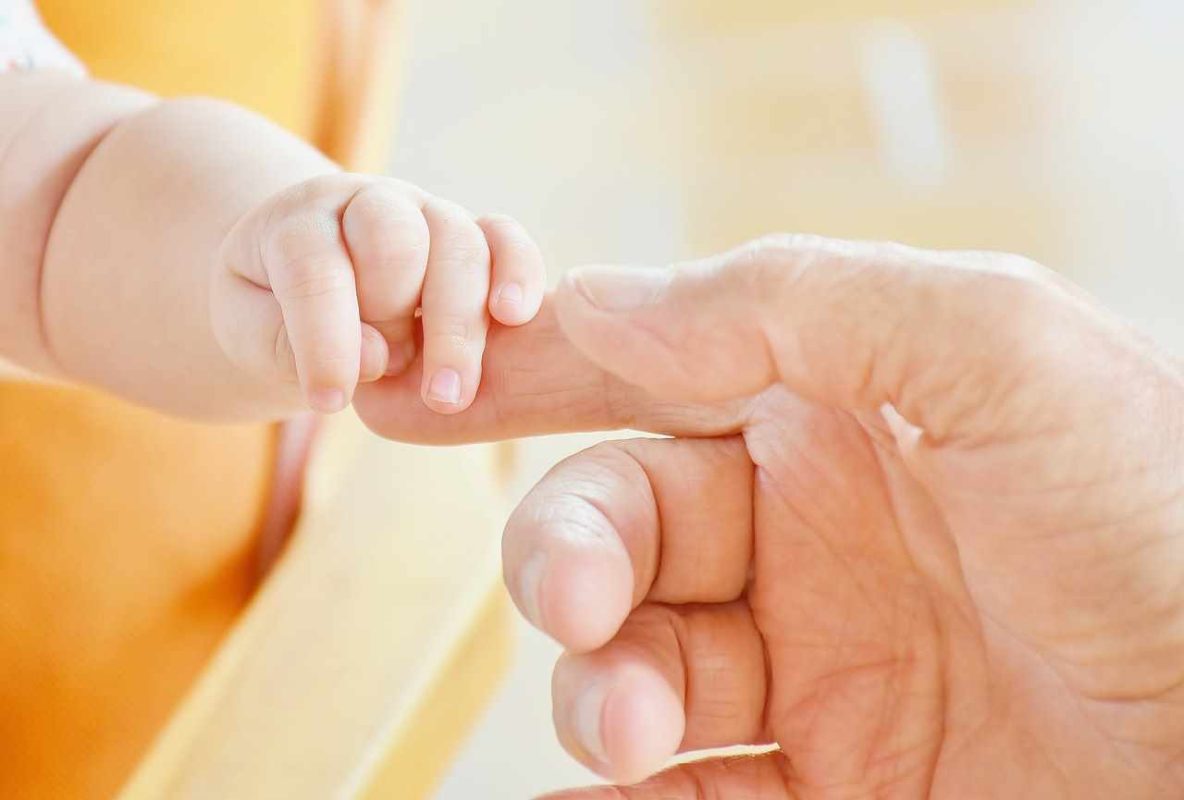Child Development
Unlocking Child Development: Stages and Techniques
Child development is a fascinating and complex process. Understanding the key stages of growth and the techniques to promote development empowers parents, caregivers and educators to nurture children’s wellbeing and success. This article provides an overview of child development, major milestones, and evidence-based strategies for supporting children’s growth.
Table of Contents
Introduction
The early years of a child’s life are marked by rapid growth and change. From infancy through adolescence, children develop foundational cognitive, social-emotional and physical skills.
Child development is shaped by both genetics and environment. Caregivers can create nurturing environments to help children reach key milestones. Monitoring progress and addressing potential delays is crucial.
Comprehensive knowledge of child development equips us to make decisions that enable children to thrive. This article summarizes key stages, highlights major milestones and provides actionable techniques to unlock a child’s full potential.
Understanding Child Development Stages
Human development follows a relatively predictable sequence, with each stage building on the last. However, the timing and pace of progress varies among children.
Infancy (0-2 years)
The first two years are a period of momentous growth. Infants are gaining basic cognitive, motor and communication skills. Key milestones include:
- Social smile – 1-4 months
- Sit independently – 4-7 months
- Crawl – 6-10 months
- Walk – 9-17 months
- First words – 10-15 months
- Combine two words – 18-24 months
Responding promptly to an infant’s needs builds secure attachments vital for socio-emotional health. Talking, reading and singing promotes language development.
Toddlerhood (2-3 years)
In this stage, children gain autonomy and independence. Milestones include:
- Potty training – 24-36 months
- Improved balance/coordination – 24-36 months
- Increased vocabulary – 450+ words by age 3
- Imaginative play – Begins around age 2
Setting gentle limits and allowing safe exploration encourages growth. Reading stories promotes literacy. Play dates help social development.
Preschool (3-5 years)
Preschoolers have lively imaginations and soak up knowledge. Key milestones include:
- Dresses self – 3-4 years
- Understands concepts like size and shape – 3-5 years
- Runs, jumps and hops – 3-5 years
- Recognizes letters – 3-5 years
- Counts to 20 – 4-5 years
Encouraging pretend play strengthens creativity and problem-solving. Teaching self-care builds independence. Educational activities prepare them for school.
School-Age (6-12 years)
As children enter school, cognitive skills expand dramatically. Milestones include:
- Refines gross/fine motor skills – 6-12 years
- Distinguishes fantasy from reality – Around age 7
- Develops interests/hobbies – 8-12 years
- Puberty begins – 8-14 years
Nurturing their interests, making time for play and monitoring friendships contributes to their development. Open communication builds trust during this transition.
Adolescence (13-18 years)
During adolescence, teens navigate physical changes, emerging identity and expanding independence. Milestones include:
- Identity exploration – Begins around age 11
- Growth spurts/sexual development – Ages 12-16
- More advanced reasoning skills – Throughout adolescence
- Part-time jobs – Ages 14-18
Adjusting rules and privileges promotes responsibility and maturity. Supporting their passions and relationships fosters confidence.
Understanding developmental stages empowers us to set appropriate expectations and provide tailored support.

Monitoring Child Development
Routinely tracking physical, cognitive, social and emotional progress is vital for spotting potential delays. The American Academy of Pediatrics (AAP) offers developmental screening standards by age.
Specific techniques for monitoring development include:
- Tracking growth parameters – Plot height, weight and head circumference on pediatric charts.
- Well-child visits – Discuss milestones with the pediatrician.
- Developmental screenings – Use validated screening tools to identify any lags.
- Comparing to peers – Note whether the child is hitting milestones at a similar pace as others.
- Observing play – Pay attention to key cognitive, physical and social skills exhibited through play.
- Discussing progress with caregivers – Gather input from parents, teachers and other caregivers.
Early intervention for any suspected delay is crucial. Tracking development alerts us to potential problems and allows us to proactively address them.
Major Developmental Milestones
Understanding typical developmental milestones across domains empowers us to monitor progress:
Cognitive Milestones
Cognitive skills allow children to think, learn, reason and remember. Key milestones include:
Infancy & Toddlerhood
- Focuses attention on faces and objects – 3-4 months
- Develops object permanence – Around 8 months
- Imitates gestures and sounds – 9-12 months
- Sorts shapes and colors – 15-24 months
- Recalls details from stories – 24-36 months
Preschool & School-age
- Speaks in sentences – 3-4 years
- Counts to 10 – 4-5 years
- Reads simple words – 5-6 years
- Tells time – 6-8 years
- Increased attention span – 6-12 years
Adolescence
- Expands vocabulary – Throughout
- Enhanced reasoning and logic – Throughout
- Greater ability for abstract thought – Around age 12
Physical Milestones
Physical or motor development refers to children’s bodily coordination and control. Key milestones include:
Infancy
- Lifts head while on stomach – 1-2 months
- Rolls over – 4-6 months
- Sits without support – 6 months
- Crawls – 8-10 months
- Pulls to stand – 8-12 months
Toddlerhood
- Walks independently – 12-18 months
- Climbs stairs – 24-36 months
- Pedals tricycle – 3-4 years
- Catches balls – 3-4 years
School-age
- Hops on one foot – 4-6 years
- Ties shoes – 5-7 years
- Rides bike without training wheels – 5-7 years
- Better body coordination – 6-12 years
Adolescence
- Growth spurt – Ages 12-16
- Increased strength, speed and stamina – Throughout
Social & Emotional Milestones
Social skills allow children to interact with others. Emotional development refers to identifying and managing feelings. Key milestones include:
Infancy & Toddlerhood
- Smiles spontaneously – 1-4 months
- Plays peek-a-boo – 6-12 months
- Anxiety with strangers – 6-18 months
- Interest in other children – 24-36 months
- Cooperates/shares toys – 36 months
Preschool
- Plays cooperatively – 3-4 years
- Recognizes emotions in others – 3-5 years
- Dresses self – 3-4 years
- Separates easily from parents – 3-5 years
School-age
- Friendships grow in importance – 6-9 years
- Rule-following morality – 7-10 years
- Independent, confident – 9-12 years
Adolescence
- Concerns about appearance – Throughout
- Develops identity – Throughout
- Interest in romantic relationships – 12-18 years
Tracking milestones in all domains paints a holistic picture of a child’s development. Any lags should be addressed promptly.

The Role of Genetics and Environment
Child development is influenced by both genetics and environmental factors.
Genetic factors like inheriting certain disabilities or medical conditions can impact development. However, identifying and addressing needs early on improves outcomes.
Environmental factors play a huge role in shaping development, including:
- Nutrition – Adequate nutrition enables healthy growth.
- Stimulation – Language-rich interactions stimulate verbal skills.
- Stress – Chronic stress impedes development.
- Trauma – Early trauma can alter brain functioning.
- Relationships – Nurturing relationships provide emotional security.
- Culture – Beliefs and values shape development.
While we can’t change a child’s genetic makeup, we can optimize their environment to help them flourish. Providing enrichment, minimizing stress and forging strong relationships bolsters healthy development.
Effective Techniques for Promoting Development
Parents and caregivers play a pivotal role in nurturing children’s growth. Some effective strategies include:
Cognitive Development
- Read books out loud every day
- Play games that build math and logic skills
- Set up play areas that encourage imagination and role-play
- Do puzzles and crafts projects together
- Engage in back-and-forth conversations
Physical Development
- Provide balls, push/pull toys, and riding toys
- Go to playgrounds and encourage climbing, jumping, running
- Dance together to music
- Do age-appropriate chores together
- Limit screen time and encourage outdoor play
Social & Emotional Development
- Model sharing, empathy and problem-solving
- Praise positive behaviors
- Provide opportunities for peer interactions
- Teach self-care routines
- Listen to feelings and reassure emotional security
Tailoring activities to the child’s stage optimizes engagement and learning. Being responsive to needs while gently pushing boundaries stimulates growth.
Parenting Approaches for Supporting Development
Parenting practices directly impact child development outcomes. Some effective approaches include:
- Responsive parenting – Promptly addressing physical and emotional needs, and comforting distress.
- Reading together – Fosters language, literacy and cognitive gains.
- Educational activities – Games, puzzles and crafts tailored to the child’s level.
- Interactive play – Unstructured playtime with engaged parent participation.
- Music enrichment – Dancing, listening to and making music together.
- Healthy routines – Consistent schedules, nutritious meals, ample sleep.
Striking a balance between providing nurture while encouraging independence is key. An authoritative parenting style blends warmth with clear limits and expectations.
Parent education programs can help caregivers understand developmental stages and parenting best practices. Establishing a peaceful home environment facilitates learning.
Cultural Influences on Development
Cultural context shapes child development in many ways:
- Parenting beliefs – Views on discipline, gender roles, independence.
- Family values – Collectivist versus individualistic orientations.
- Traditions – Rituals, ceremonies and celebrations.
- Language – Primary language spoken.
- Food and diet – Cultural foods and mealtime customs.
- Community – Interaction with extended family, ethnic community.
Educators must recognize how these factors influence development to avoid cultural bias. Connecting with a child’s home culture boosts security and learning.
Technology and Child Development
Technology is now an inevitable part of children’s environments. Some key considerations:
- Interactive educational apps can support learning, literacy and critical thinking if age-appropriate and co-viewed with a caregiver.
- Limit overall recreational screen time to 1-2 hours per day for preschoolers and school-age children.
- Ensure face-to-face interaction doesn’t get displaced by devices.
- Monitor online content and safety.
- Role model healthy device habits.
With prudent limits and supervision, technology can be harnessed to enhance learning and connection. But human interaction remains crucial for developmental progress.
Early Learning Through Play
Play is the natural way children learn, practice skills and explore relationships. Forms of play promote diverse developmental domains:
- Physical play – Gross motor (running, climbing) and fine motor (puzzles, crayons). Enhances coordination.
- Imaginative play – Pretend play builds narrative skills, creativity and emotional maturity.
- Constructive play – Blocks, Lego, crafts. Supports spatial, mathematical, and reasoning abilities.
- Social play – Sharing, and cooperating in groups. Helps social understanding.
- Learning games – Songs, rhymes, interactive reading. Boosts language and literacy.
Caregivers can spark natural play that targets the current developmental level of the child. Undirected play also allows children to follow their own interests.
Promoting Growth in Adolescence
Adolescence ushers immense cognitive, physical and psychosocial changes. Supporting teenagers includes:
- Fostering identity development through exploring interests
- Encouraging increasing autonomy with proportional responsibility
- Making time for regular family connection
- Monitoring academic pressures
- Prioritizing sleep, nutrition and exercise
- Providing guidance on sexual health
- Observing friendships and social behavior
- Watching for high-risk behaviors like substance abuse
- Allowing safe risks to promote maturity and resilience
With an authoritative, warm parenting approach tailored to their evolving needs, most teens traverse this period successfully.
The Science of Child Brain Development
Advances in neuroscience reveal how children’s brains grow:
- Neural connections rapidly proliferate through age 2, laying the foundation for learning.
- Language networks activate starting around 6 months.
- The prefrontal cortex, governing complex cognition, develops gradually up to early adulthood.
- Neural pruning during adolescence allows more efficient processing.
- Early stress can impair brain development, while early enrichment strengthens it.
Understanding these windows of opportunity inform our approach to nurturing cognitive, emotional and social growth in our children.

Conclusion
In summary, child development is a complex process influenced by genetics, environment, relationships and cultural context. An authoritative and responsive parenting approach tailored to the child’s stage allows children to thrive.
Monitoring milestones, providing a stimulating learning environment and addressing any concerns promptly helps ensure children meet their full potential. Child development unfolds over time according to a remarkable inborn timetable. Utilizing these insights allows us to support this unfolding process successfully.
FAQs
What is child development and why is it important?
Child development refers to the physical, cognitive, social and emotional changes that occur from birth through adolescence. Understanding child development is crucial for setting appropriate expectations, providing nurturing care, and ensuring kids meet key milestones.
What are the major stages of child development?
The major developmental stages are:
- Infancy (0-2 years)
- Toddlerhood (2-3 years)
- Preschool (3-5 years)
- Middle childhood (6-8 years)
- Late childhood (9-12 years)
- Adolescence (13-18 years)
How do genetics and environment influence child development?
Genetics provide the basic biological template, while environment shapes the expression of inborn traits. Key environmental factors include nutrition, stimulation, stress levels, relationships and cultural context.
What are the typical cognitive milestones in child development?
Cognitive milestones include responding to names, object permanence, symbolic play, understanding concepts, recognizing letters, counting, increased attention span, abstract thinking and more advanced reasoning.
How can parents support social and emotional development in children?
Parents can nurture social and emotional growth through modeling behavior, encouraging playdates, using emotional coaching, fostering independence, building self-esteem and having plenty of face-to-face interaction.
Let me know if you need any clarification or have additional child development questions!
References
American Academy of Pediatrics. “Screening Recommendations.” Healthy Children. https://www.healthychildren.org/english/ages-stages/screening/Pages/default.aspx
Centers for Disease Control and Prevention. “Child Development.” CDC: Milestone Moments Booklet (English). https://www.cdc.gov/ncbddd/childdevelopment/positiveparenting/pdfs/cstmmtbk_eng.pdf
Cherry, Kendra. “Vygotsky’s Theory of Cognitive Development.” VeryWell Mind. Nov 22, 2021. https://www.verywellmind.com/vygotskys-theory-of-cognitive-development-2795534
Rosin, Hannah. “The Overprotected Kid.” The Atlantic. Mar 19, 2014. https://www.theatlantic.com/features/archive/2014/03/hey-parents-leave-those-kids-alone/358631/
Shonkoff, Jack P. and Phillips, Deborah A. From Neurons to Neighborhoods: The Science of Early Childhood Development. National Academies Press, 2000.
Thompson, Ross A. “Stress and Child Development.” The Future of Children. vol. 24,1. Spring 2014. https://www.jstor.org/stable/23723385

